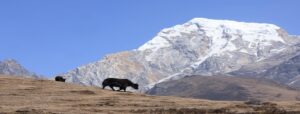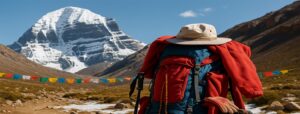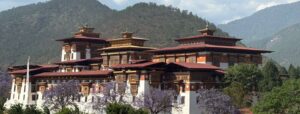Kopan Monastery is a Tibetan Buddhist monastery which is near Boudhanath, on the outskirts of Kathmandu, Nepal. It is the foundation for the Preservation of the Mahayana Tradition, it is devotion to the transmission of the Mahayana Buddhist tradition and values worldwide through teaching, meditation, and community service is reflected in the course offered at the monastery. Kopan Monastery is home to more than 360 monks, teachers, lamas, and staff.
It is a must-visit destination for those who want a peaceful escape from the hustle of everyday life. Kopan monastery has a breathtaking view of the Kathmandu valley and is surrounded by greenery, it is a perfect place to relax, meditate, and reflect. Kopan Monastery is a representation of the rich Buddhist tradition and culture and is renowned for the courses it offers on Buddhism.
The people who came from all over the world come here to enjoy the spiritual atmosphere of the place for study and practice and to attend courses. Kopan Monastery has a tranquil and calm environment for those seeking spiritual insight and inner serenity. There you will be subjected to the breathtaking sights of the Kathmandu valley as you stroll, an array of stupas, statues, prayer wheels, and other sacred objects.
History of Kopan Monastery
Kopan Monastery was established in 1969, by Thubten Yeshe and Thubten Zopa Rinpoche who were the founders of the Foundation of the Preservation of the Mahayana Tradition. In 1971, Thubten Yeshe and Thubten Zopa Rinpoche bought a piece of land from a royal astrologer in Nepal and then opened it as a monastery to teach Mahayana Buddhism to people from all over the world. The course includes the teachings of Buddha Shakyamuni, regular guided meditations, and formal and informal discussions.
The first monks to join the monastery were young boys from Manang and Solukhumbu of Nepal, some of the monks were sent to Kopan by Lama Zopa Rinpoche, at that time when re-establishing Lawudo Retreat Center. At the same time, the lamas began to give Dharma speeches to Western students who heard about them at Kopan. Weekly classes were held, and the first one-month meditation course took place in the spring of 1971.
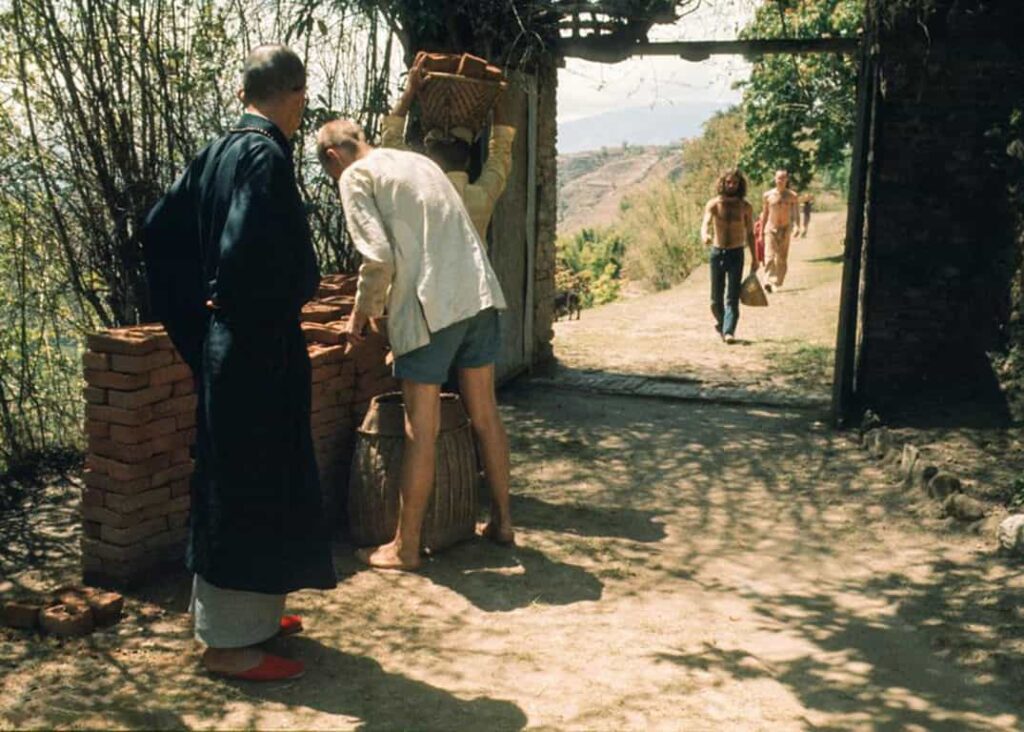
The number of students who started to attend the courses grew exponentially, with 200 students attending the twice-yearly one-month courses by 1973. Kopan monastery developed into one of the largest Gelug monasteries in Nepal, with 360 nuns and 380 monks. The annual one-month course that began in 1971 is still given today and attracts over 250 participants each year. the nuns moved into their place within the monastery and engaged in intensive practices such as the annual Nyung ne retreat, in 1994
The Story of Kopan Monastery is one of the dedication and perseverance to the spread of Tibetan Buddhism around the world.
Events and festivals in Kopan Monastery
The Kopan monastery hosts a variety of religious events and festivals throughout the year. Cultural events like musical performances and monk’s debates. The events were hosted from the establishment of the monastery, in 1969.
Also Read: Tengboche Monastery: The oldest monastery in Khumbu
The significance of the events and festivals for the community surrounding Kopan monastery is that they serve cultural traditions and practices for the people living in the area which provide opportunities for community members to come together, socialize, and celebrate their shared heritages and beliefs.
The monastery celebrates important events and festivals (Buddhist holidays) such as :
Lhosar (Tibetan New Year)
Lhosar is celebrated depending on local tradition. This festival falls in January, February, and December. There are different types of Lhosar, Sonam Lhosar, Tamu Lhosar, and Gyalpo Lhosar.

On Lhosar, they used to clean the house and all their possessions. At the monastery the gompa is vigorously cleaned, and ritual objects as well as statues, including the chandeliers high up on the ceiling. All the brocades are put out in the sun for good airing, including the huge hat of the Lama Tsongkhapa statue. The smell of Khabse, a traditional New Year’s sweet pastry, drifts through all the halls and rooms.
Monlam (the prayer festival)
It was established by the founder of the Gelung lineage of Tibetan Buddhism, Lama Tsongkapa, in 1409. Monlam means “wish-path” the Buddhist path of helping others through prayers. Kopan monastery has been hosting the prayer festival, with thousands of monks and nuns as well as a large number of lay people attending the daily prayers and teachings.
You may also like: Sherpa People: Bravest Heroes of Mountains
Prayers can be requested for any reason, such as healing, long life, prosperity, removal of obstacles, the commemoration of life events, support for dying and death, or simply to benefit all sentient beings.
Tsip Shag
It is a monastic ceremony where the students gather to receive the oral transmission from the abbot of the text they will study in the coming year. This is also the time when the participants for the Rigjung debate are chosen.
Surkor puja
It signifies the entering of the student into a higher section of their studies. They have to do extensive prayer and pujas to gather merit and to purify obstacles that might arise with the study.
Rigung Debate
It is based on the vision of Lama Tsong Khapa. It is another monastic event that marks the completion of the “minor field of studies”, which forms the first path of the Geshe studies. Only the top four students of the class were chosen during the Tsip Shang ceremony.
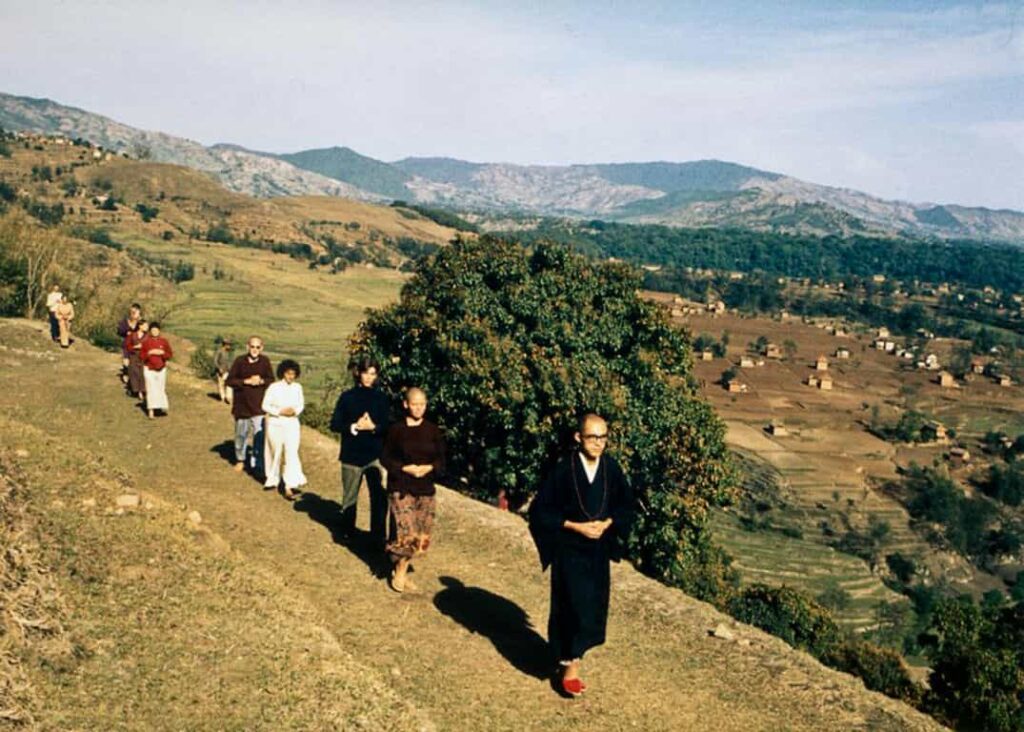
Yarne and Gaya
In the Tibetan 6th month the traditional rains retreat is held. for 6 weeks, which falls during monsoon time in Asia, the monks and the nuns stay in their home monastery in semi-retreat, spending their entire time in study and practice.
Jang Guncho- Annual Inter-Monastic Debate
It is a tradition of the great Tibetan monasteries of Sera, Drepung, and Ganden. The monks used to get together in the winter for one month and debate.
- The commemorations of the Buddha’s deeds. Special days of Buddha.
Kopan Monastery – Opening Hours & Stay
Kopan Monastery opens every day from 9:00 AM to 5:00 PM for a day visit. If you visit monasteries for the day fee won’t be charged.
More: Nepal Spiritual Hiking
You should pay certain fees for courses, retreats, meals, etc. The fee will be charged depending on your stay, and the courses you take.
If you’re planning a visit to the serene Kopan Monastery, consider staying at the Asian Heritage Inn and Bistro, located just a short drive from the monastery. Our cozy inn offers comfortable rooms and delicious meals at our onsite bistro. Wake up to stunning views of the Himalayan foothills and enjoy our daily breakfast specials using fresh local ingredients before heading over to morning meditation at Kopan. We also offer convenient pickup and drop-off services to the monastery for those wishing not to drive.
Let our expert team at Asian Heritage Treks and Travel take care of everything — from guided tours to personalized packing tips and travel arrangements.
Plan a fun adventure




